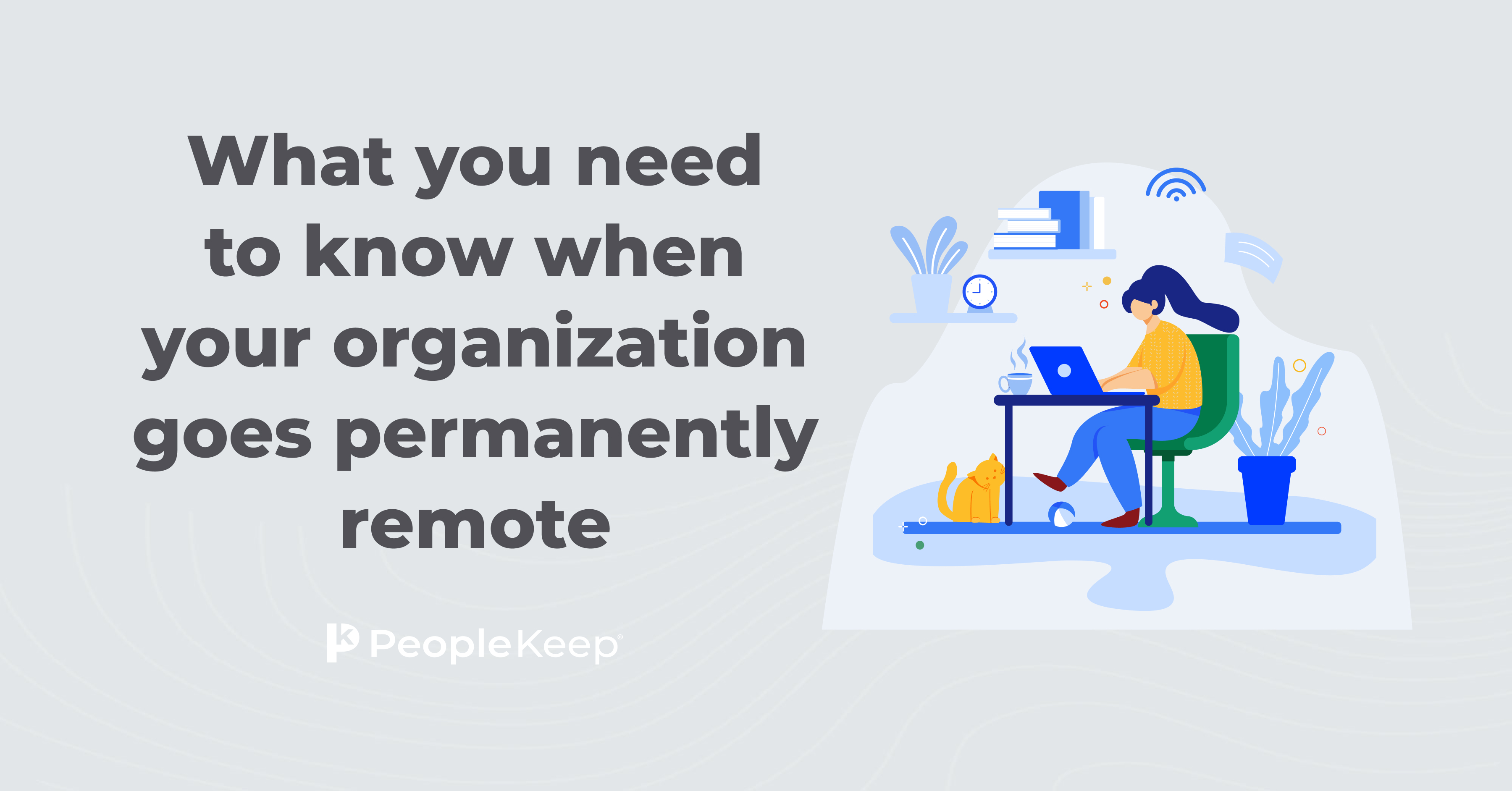Signs of low morale and how you can fight it
By Chase Charaba on January 12, 2024 at 9:13 AM
If your employees are beginning to produce subpar results, their overall productivity is dropping, or your turnover rate is increasing, low employee morale might be to blame.
Low employee morale can be difficult to correct once it takes root, as it often spreads throughout your entire company. However, identifying the signs of low morale and knowing how to correct your organization’s trajectory before the damage is done can help you foster a highly engaged team.
This article will explain what low morale is, the possible causes, early warning signs, and solutions for creating positive morale in the workplace.
Takeaways from this blog post:
- Low morale in the workplace can negatively impact employee engagement and overall success of the organization.
- Signs of low morale include high turnover, reduced productivity, lack of attendance, and a negative attitude among employees.
- Improving morale can be achieved through gathering employee feedback, setting clear goals and expectations, showing appreciation, and enhancing employee benefits packages.
What is low morale, and what causes it at work?
Morale is how your employees feel about their work, your organization, and how it impacts their lives. When team morale is high, employees often feel appreciated and happy. When morale is low, employees feel poorly about their work and your organization.
Many factors can contribute to low morale, both in the workplace and in your employees’ personal lives.
Some of the most common causes of low morale among employees are:
- Lack of communication
- Lack of trust or no culture of trust
- Micromanagement
- Employee burnout
- Lack of enthusiasm for projects
- Overload of menial tasks
- Poor benefits or perks
- Poor company management
- Lack of praise or appreciation
- Poor onboarding or training
- Lack of respect
- Low job satisfaction
- Disconnection
- Stagnation
These are just some of the many factors contributing to low morale and disengaged employees in the workplace. However, external factors such as the economy, personal demands, and debt can also affect morale.
How does low morale affect the workplace?
Poor employee morale, which directly correlates to low employee engagement, can impact your organization negatively. According to Gallup1, organizations that score in the top 50% on employee engagement more than double their odds of success compared to organizations in the bottom half.
Low team morale and engagement can lead to decreased productivity, increased absenteeism and tardiness, and high employee turnover.
Organizations with higher engagement (and therefore higher morale) are more productive, have less conflict, have a higher employee retention rate, and are better able to continue innovating.
To ensure that you don’t lose top talent and continue to keep employees happy, you’ll need to know the warning signs of low morale.
What are the signs of low morale?
Your employees can show many signs of low morale and disengagement. We’ve listed a few of the most common signs below.
1. High turnover
A high turnover rate, or employees leaving your organization, can signify low morale among employees. Workers don’t usually quit their jobs if they’ve had a positive experience and the benefits and compensation are better than the competition.
If your employees are starting to leave in greater numbers than before, chances are they’ve experienced burnout, they aren’t connecting with their coworkers, the benefits don’t outweigh the stress or employee experience, or they feel their projects have turned into menial tasks.
In other cases, a one-size-fits-all approach to management may not work for all of your employees, leading to conflict.
Once an employee leaves, others will begin to follow.
One way to prevent this is to use task relevant maturity2 or take a different management approach based on the individual employee and the task at hand. You can also work on building teamwork and collaboration in your organization.
If employees feel stagnant or like their tasks don’t have any meaning, you can change it up by assigning larger projects or allowing for cross-department professional development.
2. Low or reduced productivity
Another tell-tale sign of low employee morale is dwindling productivity in the workplace. When employees aren’t engaged in their work, they’ll stop doing their regular tasks or produce subpar results.
This can happen if employees feel unappreciated, disconnected from their coworkers, or micromanaged. It’s also a common sign of employees losing interest or meaning in their work.
One of the best ways to increase productivity is to give your employees more autonomy to do their work. Encourage your employees to take ownership of their tasks and show them how their work helps them, their team, and the organization reach its goals. Involve your employees in key decisions, making them feel more empowered to take on and complete challenging tasks.
3. Lack of attendance
When employees stop showing up for work or begin to take more sick days, they’re likely experiencing burnout and low morale. Employees who have lost the motivation to continue with their projects or no longer see any meaning behind their work will begin to disengage from your organization as they prepare to find a new job.
To inspire your employees to continue coming to work and reengage with the entire team, you can plan team-building activities and events to promote collaboration. You can also meet with your employees to gauge their overall feelings about their work and your organization so that you can begin to take steps to correct any issues.
4. A negative attitude
While frustration, stress, and discouragement are normal emotions in the workplace from time to time, a persistent negative attitude from an employee who was once positive can be a sign of low morale.
While both workplace and personal factors can cause this, it can have a negative impact on your entire workforce.
To address this, you’ll need to identify the cause of the problem. If it’s a work-related problem, discuss strategies with your HR department to solve it or offer alternative solutions.
Steps to improve staff morale
While the steps in the previous section can help resolve specific signs of low morale, there are many other things you and your team can do to prevent morale and engagement from declining.
Step 1: Gather employee feedback and have conversations with employees
One of the best ways to improve morale is to identify any potential causes before it causes damage. One of the best ways to do this is to listen to your employees’ feedback by conducting an engagement survey or holding regular meetings with your employees.
Poor communication is one of the biggest causes of low workplace morale. By allowing your employees to communicate directly with you or their team leaders, you’ll be better equipped to address any issues or concerns. Even if you don't always receive positive feedback, it's important for business leaders to value employees' opinions to have a positive work environment.
Step 2: Align on clear goals and expectations
Clear goals and expectations can help guide your employees to work more autonomously without the need for constant check-ins, which have been shown to lower productivity.
Aligning on goals can also help motivate employees, as they can see how their individual projects help the organization succeed.
Step 3: Show appreciation
Another way to boost employee morale is by showing appreciation for your employees’ hard work. You can accomplish this by personally thanking employees, providing incentives, or handing out employee awards each month or quarter.
Employee rewards and recognition programs are a great way to improve morale. When your employees feel appreciated and have a sense of ownership, they’ll continue to be engaged in the workplace.
Step 4: Provide opportunities for growth
Stagnation in the workplace can be a significant cause of low morale and engagement. If your employees feel like their current tasks aren’t advancing their careers or that they don’t have the opportunity to advance and grow, they’ll begin to disengage.
Providing opportunities for your employees to try new things, shadow other departments, take courses, or work on larger projects than they usually do will help to make their work feel less stagnant and more meaningful.
You should also provide clear opportunities for employees to earn promotions or apply for other positions within your organization.
Step 5: Promote collaboration and connection
Connecting with employees is one of the best ways to boost morale. Hosting events and activities such as annual retreats, monthly meetups, potluck lunches, and games and challenges help your employees connect with one another and with management. This helps everyone to understand each other outside of work.
You should also implement diversity and inclusion activities and councils to ensure all your employees feel welcome in the workplace.
When your employees feel connected, you’ll see an increase in morale and employee wellbeing.
How employee benefits can boost employee morale
Another way you can improve morale at your organization is by bolstering your employee benefits package. Benefits are an important factor in employee happiness. When your employees feel cared for and appreciated, they’re more likely to stay at your organization and have increased job satisfaction.
When employees feel appreciated, they’ll become more productive and have a positive outlook on your organization. These positive feelings can spread throughout your organization, helping other workers feel positive.
Employee benefits can also help with recruitment. According to PeopleKeep’s 2022 Employee Benefits Survey Report, 82% of employees say that a benefits package an employer offers is an important factor in whether or not applicants accept a job with that organization.
One of the best ways to expand your benefits and improve morale is by offering personalized benefits. These flexible and individualized benefits allow you to provide an allowance to or reimburse your employees for various expenses while empowering them to use their benefits on the expenses that matter most to them.
Health benefits
Health benefits are frequently cited as one of the most desired and effective benefits. With rising healthcare costs, offering health benefits can help relieve some pressure from your employees, allowing them to focus better at work.
A health reimbursement arrangement (HRA) is a popular option for providing a tax-advantaged benefit. You can reimburse your employees with an HRA for their qualifying medical expenses, such as individual health insurance premiums and out-of-pocket medical costs.
Three of the most popular types of HRAs are:
- Qualified small employer HRA (QSEHRA)
- Individual coverage HRA (ICHRA)
- Group coverage HRA (GCHRA), also known as an integrated HRA
A health stipend is another personalized health benefit you can offer your employees. This works similarly to an HRA but with fewer regulations and restrictions on which expenses are eligible for reimbursement. However, health stipends are taxable, and they don't satisfy the ACA's employer mandate.
Other perks and benefits to consider
Health benefits may be the most in-demand employee benefits, but they’re far from the only benefits your employees want. For the best results, you’ll want to provide a variety of benefits.
Wellness benefits are a great way to improve employee well-being, which can reduce stress and absenteeism. While there are many options for creating a wellness program, you can create individualized wellness programs with a wellness stipend. This allows you to reimburse your employees for their wellness expenses, including gym memberships.
If you have remote workers, offering a remote work stipend can help ensure they have the tools they need to be successful at work. You can accomplish this by reimbursing employees for their home internet access costs, cell phone bills, or home office setup costs. When your remote workers are set up for success, they’re more likely to be productive employees.
Other benefits to consider include:
- Education benefits
- Retirement benefits
- Paid time off (PTO)
- Commuter benefits
- Flexible hours
If you want to go the extra mile to determine which benefits are best for your employees, you should consider conducting an employee benefits survey. This allows your employees to provide feedback on their benefits and the perks they’d like to see offered.
Conclusion
Low morale can disrupt an organization’s growth and lead to increased employee turnover rates and absenteeism. Although it can sometimes be challenging to spot the signs at first, there are several initiatives you can take to ensure employee morale remains high.
With patience and constant monitoring, you’ll ensure that your employees remain happy and engaged.
If you think your benefits package could you a boost to combat low morale and improve employee wellbeing, PeopleKeep can help. Our personalized benefits administration software makes it easy to set up and manage HRAs in minutes each month.
1. https://www.gallup.com/workplace/321965/employee-engagement-reverts-back-pre-covid-levels.aspx
2. https://www.hostinger.com/blog/task-relevant-maturity
This blog post was originally published on August 10, 2022. It was last updated on January 12, 2024.
Check out more resources
See these related articles

What you need to know when your organization goes permanently remote
Going permanently remote? Get ready with this comprehensive guide that covers everything you need to know about transitioning your organization to remote work.

How to maintain a work-life balance
Struggling to juggle work and personal life? Discover effective strategies to maintain a healthy work-life balance with this blog post.

Employee retention: The real cost of losing an employee
Employee turnover is costly. Discover the true cost of losing an employee and how improving retention can protect your bottom line and team performance.



